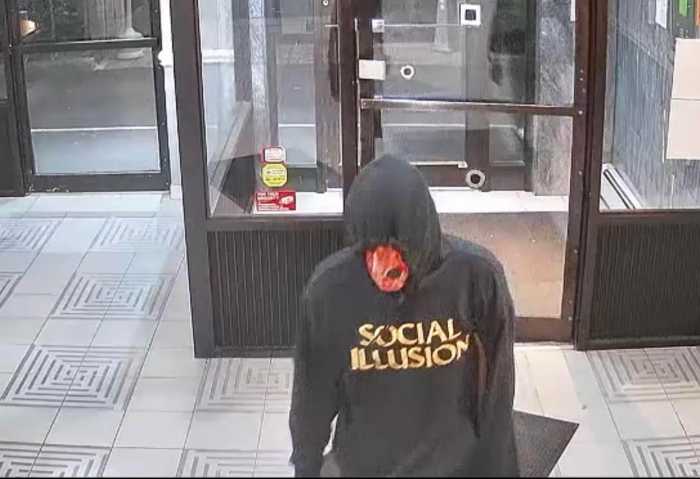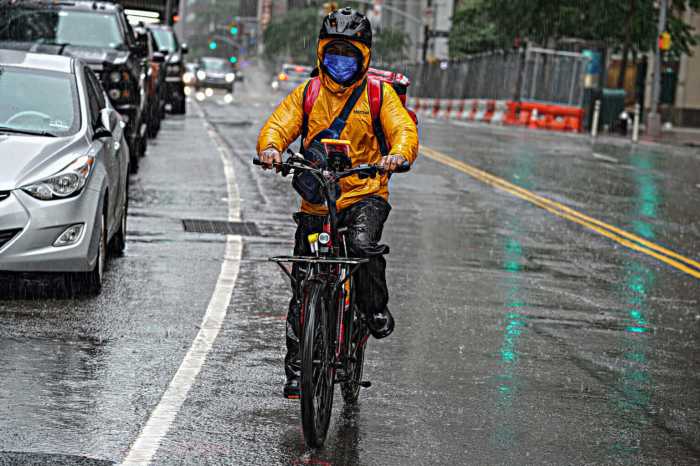
When Karla Jay heard about the Stonewall riots on the radio the morning of June 29, 1969, the then-22-year-old got on the 1 train and made her way downtown.
“I was an activist. I wanted to see what had happened,” Jay recalled. “All of us who were gay and lesbian back in the day … we all knew what it was like to be in a bar that was busted by the police.”
Not long after, she had joined the Gay Liberation Front — one of a number of LGBTQ organizations that formed in the months after the uprising. A year later, New York City saw its first pride march, called the Christopher Street Liberation Day March.
While the LGBTQ civil rights movement began before Stonewall, the uprising rallied supporters and marked a turning point in its history. Fifty years later, the Stonewall Inn has become an iconic symbol of the movement.

“The attitude after Stonewall really shifted into one of defiance,” said Jay, an LGBTQ activist and author who is now a professor emerita at Pace University. “I say that Stonewall was the spark, but we were the torch.”
An uprising begins
The Stonewall uprising began in the early hours of June 28, 1969, when police officers raided the mafia-owned gay bar on Christopher Street.
Most gay bars at the time were mafia-owned and operated, in part because serving alcohol to gay people was illegal. The result was a “vicious cycle” wherein police would raid bars and the mob would pay them off, Greenwich Village Society for Historic Preservation executive director Andrew Berman said.
“Any place that served alcohol to somebody who was known to be a homosexual could be shut down for doing so, because that was considered inherently disorderly,” Berman explained.
This time, however, patrons began to fight back, sparking protests and demonstrations that drew hundreds of activists over the course of six days.
The months that followed saw the formation of LGBTQ organizations like the Gay Liberation Front, the Gay Activists Alliance and the Street Transvestite Action Revolutionaries, known as STAR.
Activist Rich Wandel, who founded the LGBT Community Center National History Archive, said he joined the Gay Activists Alliance in 1970, after coming out at the end of 1969.
“I’m a child of the ’60s. I was already accustomed to the idea that one fights for justice,” he explained. “Once I came out to myself, clearly all of the nonsense I’d been taught about what ‘gay’ was wasn’t true, because it wasn’t who I was.”
Stonewall persists
Stonewall could easily have been forgotten had it not been for the work of activists in subsequent years, Berman said.
Most of the news articles written about the riots were “extremely demeaning,” he noted. A now-infamous Daily News article published on July 6, 1969, bore the title “Homo Nest Raided, Queen Bees Are Stinging Mad.” (The paper later called its coverage “complicit in reflecting the demeaning and discriminatory attitudes that were so prevalent during the era.”)
The original Stonewall Inn, meanwhile, shut down after the uprising; the two spaces it occupied at 51 and 53 Christopher Street in Greenwich VIllage housed various businesses over the next few decades, including a bagel shop and a Chinese restaurant, according to city records. A new gay bar called Stonewall opened at 51 Christopher St. in 1987, but closed in 1989.
A third Stonewall Inn began operating out of 53 Christopher St. in 1993, records show. The bar’s current owners took over in 2006, when it became clear that the business was “going to go under,” co-owner Bill Morgan said.
Their goal has always been to respect its history while keeping it at the forefront of the LGBTQ rights movement, co-owner Stacy Lentz said.
“It’s not just a bar — it’s much more than a bar,” Lentz said. “It really is a globally-recognized symbol.”
Stonewall has been “a touchstone in good times and bad times for the LGBT community,” Morgan noted. After a shooter killed 49 people and injured 53 others at Pulse nightclub in Orlando in June 2016, a makeshift memorial grew outside the bar as visitors gathered to remember the victims.
This year, Lentz says 3 to 6 million people are expected to pass through the city for Stonewall 50 and WorldPride. On a recent Wednesday, New Yorkers and tourists alike flocked to the bar to take in its history.
Brooklyn resident Jerry Holste, 69, recalled traveling to the outskirts of Christopher Street in his 20s — but only to observe, not participate, he noted.
“You were always afraid you would lose your job, your name would be published in the papers. … So we still sort of were in the closet,” he said. “I’m comfortable with myself now, and I realize that I am normal.”
“It’s such a beautiful thing seeing all these people from all corners of the world coming here at this time,” Manhattan resident Anthony Dolci, 50, added.
Preserving history
Though the Stonewall Inn is both a city and a national landmark, many people aren’t familiar with its history, activists said.
“For those of us who live in New York and are surrounded by many LGBTQ people who are out and proud, we forget that many of us are still a hidden minority in many parts of the United States,” Jay said. “And so for us to claim our visibility, 50 years later, and to tell our history, is really important.”
“Making Gay History” podcast host Eric Marcus, who founded and chairs the Stonewall 50 Consortium — a group of organizations that have been planning programming and events tied to the anniversary — called 50 years “an important mark.”
“So many of us grow up feeling alone or isolated … and we don’t know that there are these people who came before us; that we have a proud history; that there are people who can be role models to us,” he said.
Stonewall has become a rallying cry to “come out, to be open about who you are, and to demand equal treatment,” Berman said.
“Like a lot of places in the Village, it symbolizes positive social and political change,” he said. “Having this place that you can sort of point to and say, ‘This is where it happened,’ is wonderful.”
With Li Yakira Cohen



































